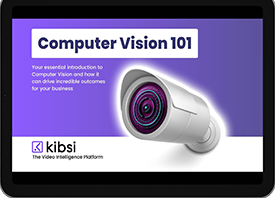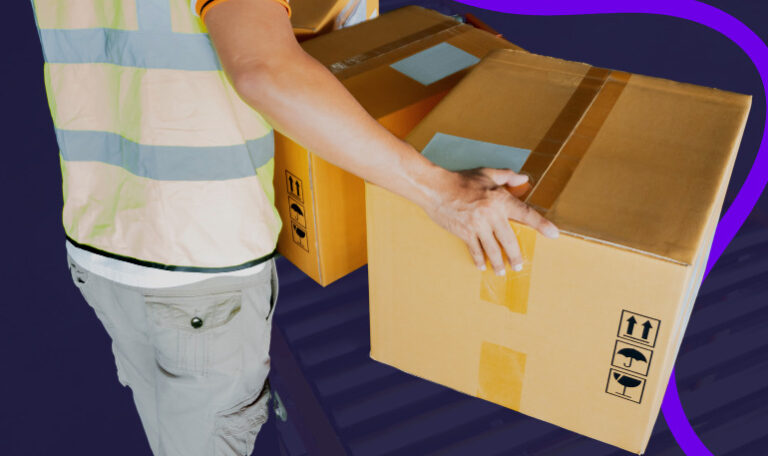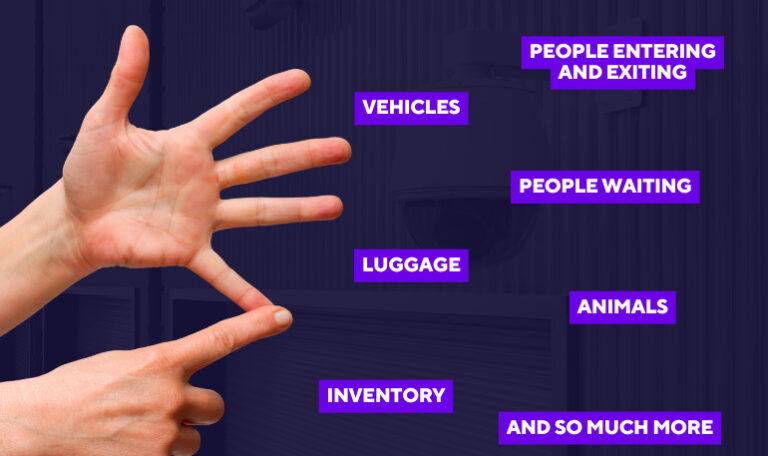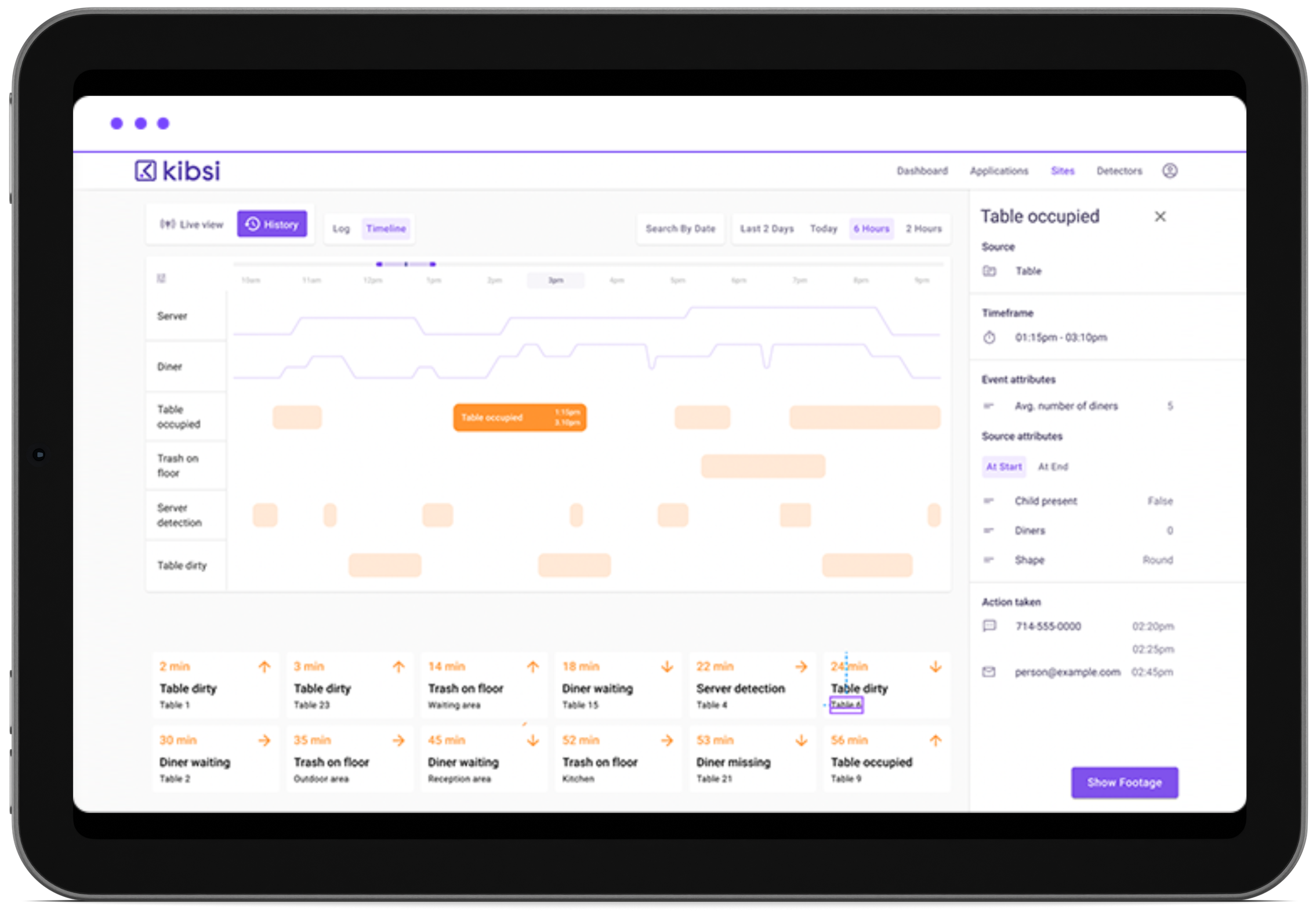Our CEO Tolga Tarhan met with Critical Mass Business Talk Show’s Ric Franzi to share his entrepreneurial journey and insights as the founder and CEO of Kibsi.
Announcer – You are listening to the critical mass radio show, Orange County’s Business Talk Show, focused on exploring topics of interest to CEOs who are leading middle market companies. With your host, Richard Franzi.
Ric Franzi – And welcome to Orange County’s longest running business talk show. I am your host Ric Franzi, and I promise you we have a great show planned for you. Why is that, you ask? Because Tolga Tarhan, who is the founder of Kibsi is our guest today. Tolga, welcome to the show.
Tolga Tarhan – Thanks for having me.
Ric Franzi – Let’s get right into it. As I said at the top, you’re the CEO of Kibsi, and I’m wondering what was your original motivation to start this business and — just take us through that.
Tolga Tarhan – Yeah, so in my prior life, we did a lot of work in connected devices, Internet of Things. You hear about everything from smart home devices to those same kinds of things scaled up to industrial environments. And what we noticed with our industrial customers and our pub entertainment venues and those kinds of customers is they could do a lot with those sensors, but they couldn’t go as far as you might be able to go with cameras. Right. So if I have a sensor that counts people as it walks by, that’s all I can do with that. It’s kind of one dimensional. If I have a camera that counts people as they walk by, I might be able to get demographics, interactions, how long they stood there, what they touched. And so you get a lot richer sort of human level cognition out of that. And so we saw a gap where adopting that kind of approach was incredibly difficult. It took a ton of R and D, and it took a ton of data scientists that are very in demand, very hard to find. And I just felt like it’s impossible for every mid-market enterprise customer to go hire a CV team and build a computer vision outcome for themselves.
Tolga Tarhan – So it creates an opportunity for a kind of platform play. And that’s what we decided to do.
Ric Franzi – And this partly came out of your recent experience in your last company, is that correct?
Tolga Tarhan – Yeah, we used to do consulting in the space so companies would come to us and say, hey, I want to build something that detects if my workers are wearing their safety hats. But that kind of development on a custom development basis is just cost prohibitive for most use cases. And so we thought, what if we built a platform where you could define those customer outcomes, but not start from zero?
Ric Franzi – So it’s been a year or so since you and your team decided, I’d like to just maybe highlight who the team is that you’re working with to get tipsy off the ground. But what have you learned in that time about the business and kind of what you’re building?
Tolga Tarhan – Yeah, so it’s been since August, so it’s not even not even quite a year yet. Yeah, we’re moving fast. The biggest learning has been that people don’t know what computer vision is. So I always expected that we could start our message from hey, computer vision is hard and here’s a better way to do it. But we’ve got to start our message actually from why do I care about computer vision? Which is sort of a step further back in the understanding. And so that’s where we start and we tell customers about hey, if you could have computers look over your industrial factory floor and get the same kind of perception you could as a human can get from that immediate kind of starring onto the floor, what could you measure in your business or what could you take action on that you can’t today? Right. Like imagine having the power of sight understood by computers and so that tends to then get people thinking. But we thought that part would be evident and it turns out it’s not.
Ric Franzi – When you have that interaction and you then get the light bulb to turn on, what are you seeing from the people that you’re talking to?
Tolga Tarhan – Yeah, that’s what’s really cool, what we’re seeing. Our use cases we would have never imagined. So if we sat in a room and said, hey, what are the most important computer vision use cases that we could go address? That list would look nothing like what you actually hear from customers when you talk to them. They’ve got almost every single customer that’s sort of a mid-market or enterprise customer has business challenges that they don’t have solutions to that computer vision could help with and at least they tend to think about how. Here’s this really obscure workflow that’s unique to my business and if I had a camera that could detect this one thing. I could improve productivity or efficiency or reduce cost by a measurable amount. That’s huge. And my thesis is that those bespoke needs exist en masse all over, all over the industry as opposed to trying to just solve like one or two vertical use cases.
Ric Franzi – So it’s in my experience, from interviewing early stage entrepreneurs that when you have a good idea, you have to be careful because you can become overwhelmed with people who want to maybe get you to work on their specific problem. I don’t know if that’s Kibsi’s issue thus far, but what are you finding this far was how do you and the team put a disciplined approach behind the work that has to be done to build a platform that’s going to serve the need?
Tolga Tarhan – Yes, you’re right. And as a startup you have this push and pull, right? You want to take every use case because you want to grow your startup but you also don’t want to go and accidentally become a custom dev operation. And so what we’ve done is because we’re taking a platform approach so we’re not targeting a certain vertical, we’re targeting a tool that you could build a use case on. We kind of evaluate potential customer partnerships at this stage of our company based on, hey, if we had to build the features that you need or the detectors that you need, is that on the kind of path to the mass market product we’re trying to build that everybody can take advantage of? And the good news is that every time we add a feature or every time we add a new detector to be able to detect a new object type, it’s very common. The case is very often the case that that’s going to translate to other industries. So that’s kind of the filter.
Ric Franzi – So tell me a little bit about the team that you’ve assembled.
Tolga Tarhan – Yeah, so three other co-founders, the people that I’ve worked with in the past that bring incredible talent from technology, from go-to-market, from brand and culture. So we’ve got sort of three technologists co-founders and one non-technical co-founder, which I think is a really cool thing and uncommon thing for startups at our stage. And then the rest of the team are engineers, a mix of software engineers and architects and sort of computer vision, machine learning, AI focused engineers and architects.
Ric Franzi – So what is that like to recruit? Because you said earlier they’re hard to find, they’re in demand, which means also they’re expensive, relatively speaking. So how does a startup in your situation talk to these people who have probably multiple options and convince them that they should dedicate their talents and time to your projects?
Tolga Tarhan – Yes, for sure they do. Right. And then you’ve got like the Amazons and the Googles of the world grabbing that same talent? I think what’s exciting about a startup is the ability to sort of shape your own world, to have a bigger out-sized impact. And so the folks that we targeted, those folks who want obviously fair compensation and opportunity and a chance to grow, but they also want to lead and have sort of way more impact than, you know, the 100,000 employee at a large company. And so those people are attracted to us and we’re attracted to those people. And that helps a lot.
Ric Franzi – Is Southern California a good place for you to be incubating and launching Kibsi?
Tolga Tarhan – Yeah, I think we’re sort of an under appreciated geography for this kind of talent. I mean, software engineers exist in Mass around here and so we have folks primarily in So-Cal. We have a few folks outside of So-Cal as an employer, we’ll take talent where we can get it, but our own networks obviously are here and so we can attract local talent a little bit easier. But I actually think it’s obviously not Silicon Valley, but I actually think there’s a lot of LA / Orange county-based technical talent.
Ric Franzi – Is UCI a player in this? When you talk about getting talent, are they producing people that are in your industry that you can leverage?
Tolga Tarhan – For sure they are. Our team today doesn’t have a big skew towards any one school, I would say there are quite a few California universities that our team comes from. So I think if you brought that into like, you know, UCS and CSUS and other schools in California, that makes up a large portion of our team. I do think as we grow and we grow out of the sort of seed stage into a company that can work with less experienced folks, it will be really great to be so local to UCI. I’m confident there’s talent there. As a seed stage company, it’s hard to take on interns and those levels of folks, but I do see that in the future.
Ric Franzi – So, talking about seed grounds, your seed stage, you just announced a $4 million seed round of funding. And so I’m wondering for all the other entrepreneurs out there who maybe aren’t there yet, or what are you planning to do and how are you going to use those funds?
Tolga Tarhan – Yeah, so we did, we raised a successful seed round, did it pretty quickly, I would say just in a few weeks. And all of that is going to essentially the engineering effort. So almost nothing else even registers. If you sort of sort expenses for the next 18 months, it is engineering salaries. And that’s because at this stage in our company, what we need to prove is that our core thesis work, because we’re taking a very different approach to this market than others, and that the technology we’re building will both work and it will solve real customer problems. And so that looks pretty much like heads down engineering and then customer interactions.
Ric Franzi – I don’t want any confidential information, but just give us a sense for what it’s like to be in your place as the CEO of this company with a big vision, no pun intended where do you choose to spend your time to move the business? Where does it need to go?
Tolga Tarhan – Yeah, that’s really interesting. So at this stage, and I’ve been at this stage once before, so this is the second time sort of building from scratch, if you will. At this stage, I’ve got really two major jobs, I would say. One is the vision and the direction and make sure that we’re all kind of marching to the same drumbeat and building the product that we imagine we set out to build. And then the other is getting everything out of the way for the team to execute, which are two very different hats, because one is very strategic and very big picture and very sort of inspirational thinking, and the other might be picking up the trash off the floor if that’s what it takes. Right. I’m a technologist by heart, so I definitely tinker. And the architecture, the design, are we building something that’s going to scale and have the right effect? But that’s a small percentage. Most of my time is either strategic direction, which involves customers as well, potential customers, what do they want, what are they asking for? Where do we see gaps, what are our competitors doing? And then it’s very tactical. Like, let’s eliminate any blockers to progress for the team.
Ric Franzi – Obviously, you must have because you got a seed round, but you must have to spend some of your time with potential investors and talking to them about the vision for the company as well. Can you share a little bit about what that dance is like?
Tolga Tarhan – Yeah, I mean, investors are a key type of stakeholder. They’re almost … you can think of them as customers in a way. So as a seed stage company, the only path forward is to raise a Series A, right? Like, the reality is when you go raise a seed round, you do that so you can scale fast and grow fast and build a team. But when you build a team, then what that creates is kind of a cash runway situation. Right? At some point you’re going to need a Series A. The way we think about our investor relationships is we want to have strong alignment with our investors. So the investors that we picked for our seed round believe in our vision. They understand what we’re building. They want to be with us and partners for the long run. So we’re very transparent with them. We meet with our investors about every six, eight weeks, give them a download on our progress, show them the technology as it evolves, show them go-to-market messaging as it evolves, ask them for help where we need it. For example, connections and relationships to folks that we want to work with.
Tolga Tarhan – And then we have I would say we understand very clearly what our goals are before that Series A fundraise. And so one thing that drives us and helps us prioritize is, is there something we need to do to get to where we need to get to raise a Series A? Now, that’s a very broad that’s not to say everything we do is for the purpose of fundraising, but if you use that kind of North Star, well, to get a Series A, we need a couple of customers that have validated the use case. We need technology that works. We need go-to-market content, understanding and strategy. And so it kind of drives a really broad agenda. Of all the things you have to do.
Ric Franzi – It’s Steven Covey begin with the end in mind, right? That’s kind of one of the disciplines that I hear that you mentioned, one of your founders not being a technologist, and if I remember correctly, she’s in the customer user experience arena. Am I correct in that?
Tolga Tarhan – Yes, we call her our Chief Experience Officer, but we think of experience as actually broader than software. So a lot of folks, when they think about user experience, their focus on like, the placement of content on the screen and how you click and interact. And that is a very important part. No doubt. But what I learned in my experience building the Last Company is how customers perceive you and how employees perceive you and how they interact with you as a business is big. And so experience isn’t just product experience. It is what’s your brand look like, what’s your culture like, both internally and externally facing, how are you perceived by others in the market? And so it’s a much bigger view. It’s everything from sort of an employee culture to branding to marketing to the messaging to when you sign up for our product. What’s that first email going to say and how you’re going to engage with the company?
Ric Franzi – Is that something you knew the last time you built your other startup, or is that something you learned through that experience?
Tolga Tarhan – I definitely didn’t know it last time, so last time it was all engineering all the way. And as I think back to that experience and I look at other competitors that grew up in the same industry, in the same place as us, one of the big differences in success rates, I think, was how much attention did you pay to that perception? Do you look like a mature company with a big operation that looks stable and growing, or do you look like a small startup? Right. And so I think that technology entrepreneurs probably don’t pay enough attention to sort of the overall customer experience start to finish, as they should.
Ric Franzi – I think experience is the best teacher in business, and that’s why I was curious to hear your answer. And there’s only some things you can learn by doing. You can plan all you want until you get on the field or get in coding, whatever. Talk to a prospect, just like you said. You learn so much from that. Where do you go to gain access to other entrepreneurs who have experiences or insights that help you to grow the firm and kind of stay ahead of the competition?
Tolga Tarhan – Yeah, I think this is maybe another learning, is the last time I built a startup, I thought I knew everything, and so maybe I didn’t seek that advice out. As much as you go through that experience once, you realize the benefit of a network of people around you. So my primary driver, or my primary sort of source at this point is the great network I got to build in the last experience. Right. That last startup was a ten year journey through two acquisitions I have met that are executives at large corporations. I have met other entrepreneurs who were competitors. I have met sort of a network of folks who now I could call and have a conversation with and say, hey, here’s what’s going on, here’s where we’re at. What are your thoughts? I find that to be the most valuable source of information. I also recently found that there’s actually a lot of great content on YouTube, but I don’t mean to plug any particular platform, but the reality is the amount of content of people talking about their experiences is very large. And I find those, like, ten-minute kind of video formats to be a really consumable way to hear something and get an opinion.
Ric Franzi – We are in an exciting time where technology is bringing people closer together like that. People who have knowledge now can share it, and it’s generally easy. Once you find someone, you find more like them. That’s fantastic. And I applaud you for being a lifelong learner, even with your success, because sometimes past success sort of colors our interest in hearing other people’s opinions. But it’s always a new day. So talking about a new day, let’s look to tomorrow. So Tolga, for our audience, describe your vision and you and your co-founders for the future of your firm.
Tolga Tarhan – Yes, our vision is to become a platform upon which others build computer vision. And so when a customer says, hey, I have a computer vision problem, or I have a problem that cameras could solve if cameras were just a little smarter, the current path to that outcome, or buy some vertical product for your industry or build it yourself. We want to be the third path in that equation. So it’s by vertical product, build it yourself or build it on Kibsi. And so we’re going big. We’re going for that kind of household name among the developer and business analyst community as the place to go build computer vision applications.
Ric Franzi – And tell me how you and the team, the founders, came up with the name.
Tolga Tarhan – You know, we need to make up a better story here, because the reality is we spent weeks and weeks googling and searching, looking at lists of potential names, and this one came up sort of on a list of name ideas that we saw on some ideas. And here’s the key thing for us. It was short and there was a dotcom, and it could have a personality. So going back to that customer experience thing, I think if we call ourselves Computer Vision Solutions, that’s not a brand that can have a personality, something short like Kibsi, it could almost be a persona. So that was a key goal in the name.
Ric Franzi – Okay, so if someone would like to connect with you or learn more about Kibsi, where would you ask them to go? Online?
Tolga Tarhan – Yes. I think LinkedIn. Find me on LinkedIn or find Kibsi on LinkedIn. I’m pretty active there. I’d love to hear from you. I read those messages, all of them. I’m trying to also become more active on Twitter. So if anybody wanted to find and follow us on Twitter, that would be great as well.
Ric Franzi – Can I ask you why?
Tolga Tarhan – Why Twitter?
Ric Franzi – Yes.
Tolga Tarhan – In the technology community, it’s just sort of where open dialogue seems to happen. I think LinkedIn, you get more long-form content, you get more thoughtful material. But on Twitter, what you get is an impromptu discussion about something on someone’s minds today. I think there’s some value to that.
Ric Franzi – I think so, too. Yes. The less time that you can get the most value that, especially in your situation, are all busy entrepreneurs. Time is your most precious commodity, I would think, at this time.
Tolga Tarhan – Yeah, it certainly is. More time would be very helpful.
Ric Franzi – And that’s why I really appreciate you spending 20 minutes or so here with me and with our audience today and in the future on the podcast. So thank you for being a friend of the program and a part of our business community.
Tolga Tarhan – Thanks for having me. Great conversation.
Ric Franzi – I enjoyed it. And I want to thank the audience. You’ve been a part of Orange County’s longest running business talk show. This was episode number 1357. If you’re an Orange County entrepreneur and you would like to tell your story, then connect with me on LinkedIn.








